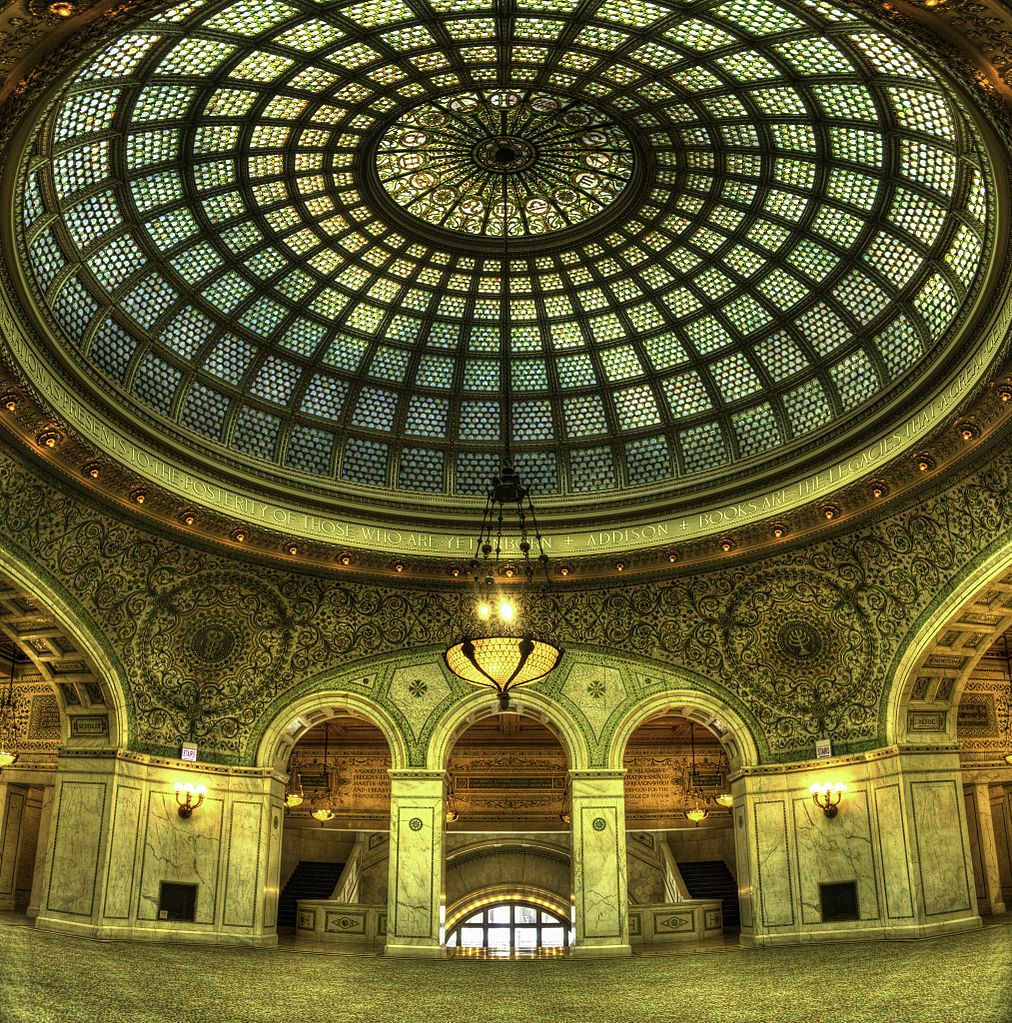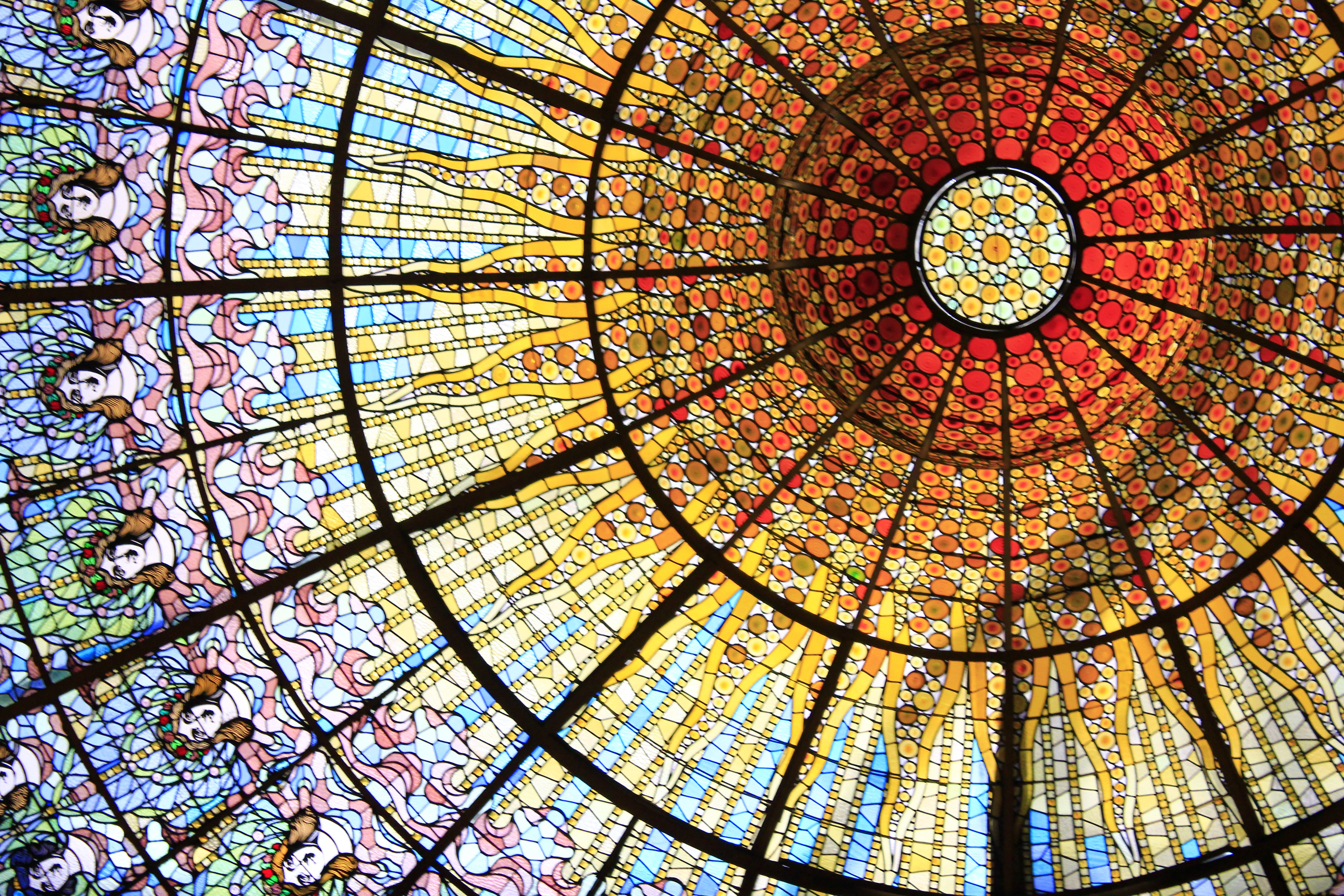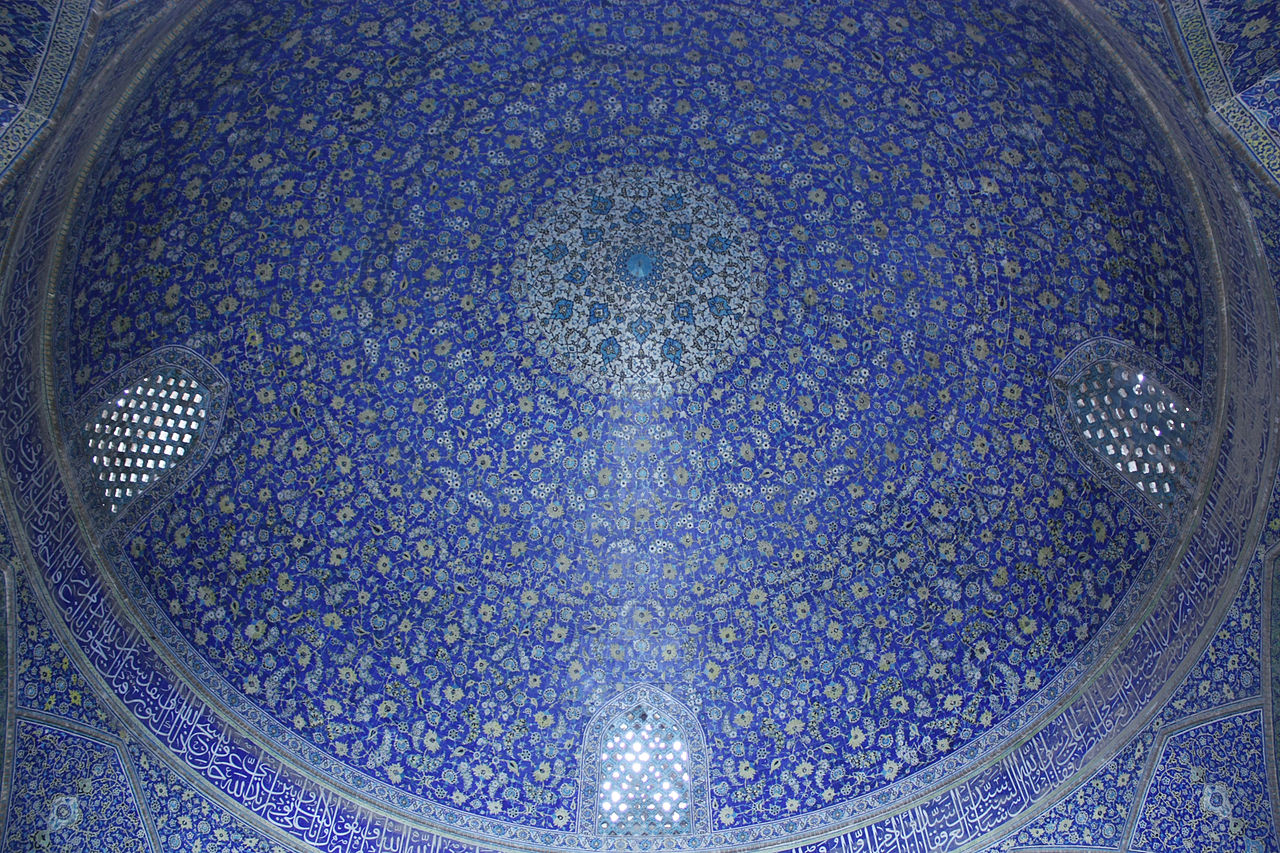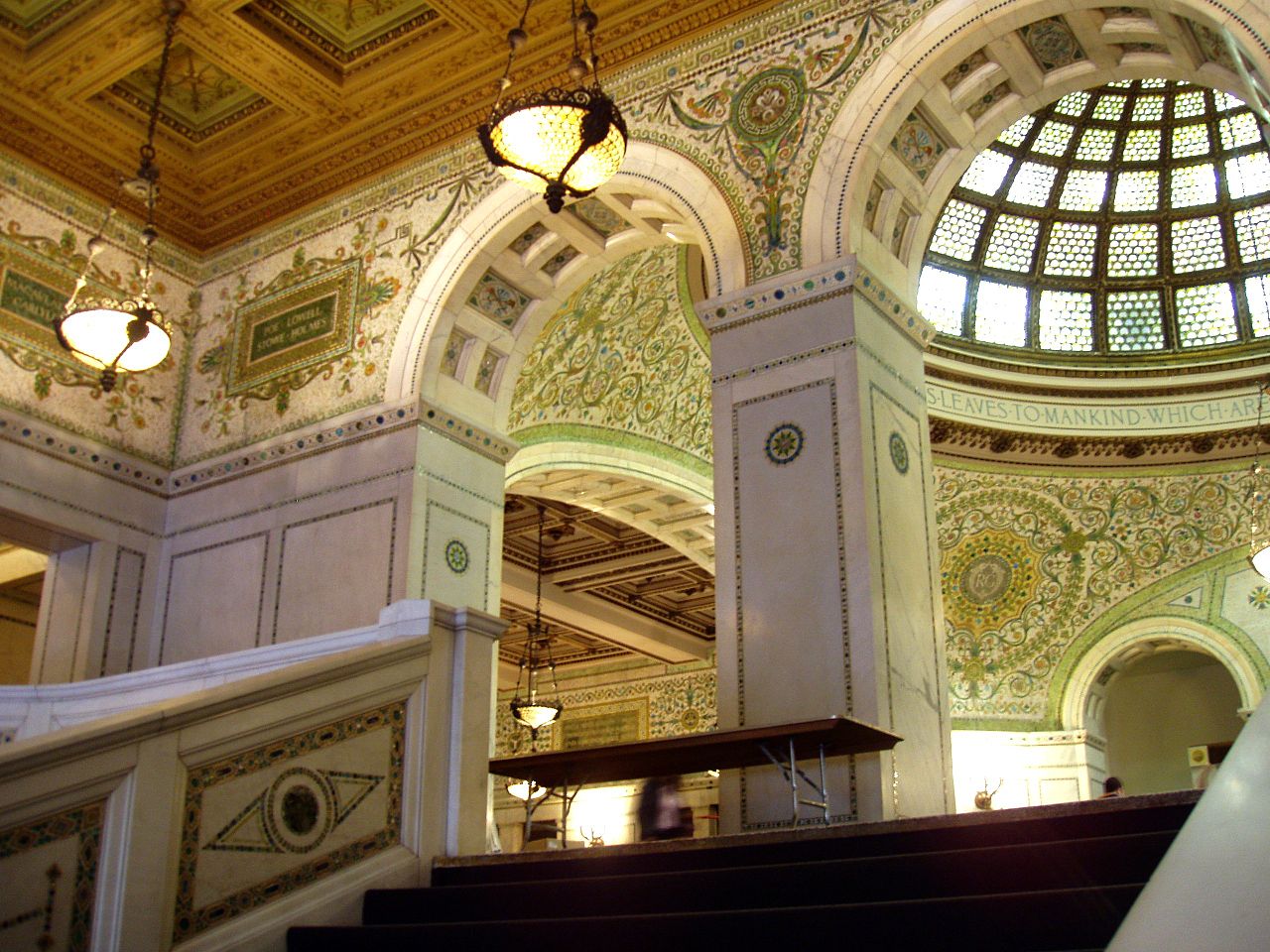10 Impressive Mosaic Ceilings Around the World

Since the antiquity, mosaics were always one of the most prestigious decorative techniques. They required a lot of skill and a real artistic talent, while their craftsmanship, aesthetics, and size would often leave people in awe. Mostly used as floor decoration in ancient Greece and Rome, mosaics were also found on walls and ceilings, especially during the Middle Ages. Although their thematic and style changed depending on the period and location, historic tesserae combinations all had the same goal – to dazzle all who came to view them. Often made with precious stones and gold, mosaics did instill a sense of majesty in many spaces, especially those with great areas covered. Mausoleums, public halls, churches, mosques and other public buildings used mosaics to mesmerize believers or visitors, and many of these monuments still continue to do so today.
It’s fair to say that it would be impossible to list all the impressive mosaic ceilings, so we’ve made a virtual trip around the world and through the ages and selected ten among them that every mosaic enthusiast needs to know.

Mausoleum of Galla Placidia in Ravenna. Lunette with the Good Shepard and the Ceiling next to it. Photo by Flickr
Mausoleum of Galla Placidia in Ravenna
The final resting place of Galla Placidia, daughter of Roman Emperor I who died in 450 AD, is today known as the mausoleum with the absolute finest example of early Christian mosaics. A symphony of blue reveals a clear Byzantine influence in style and palette, covering vaults, lunettes, and dome of the church. The iconography is completely in line with the era, presenting paleochristian symbolism and scenes depicting apocalypse, but also the triumph of life and eternity over death. Mainly ornamental, these mosaics do show apostles in different biblical fables, while arches and the majority of ceilings are covered in stars and characteristic patterns. What impresses the most about these mosaics is not their thematic cycle, but the stunning craftsmanship and aesthetic sense that went into every composition and every detail. Harmonious colors complement each other in either blue, floral or figurative elements, while figures of people and animals are created with utmost care and by an artist who obviously knew how to handle proportions. This masterpiece of early mosaic art is wonderfully preserved and serves as inspiration for all art lovers today, especially those who enjoy the art of tiles.

San Marco Venice, Ceiling mosaics. Photo by Dennis Jarvis
St Mark’s Basilica in Venice
One of the most famous churches in the world is also one of the most opulent. Set at the heart of the glorious Venice, St. Mark’s Basilica is the ultimate example of the successful fusion of the East and the West, both in architecture and artistic decoration. Its ceilings and walls are almost entirely covered by mosaics spreading over more than 8000 sqm (86100 sqft). With backgrounds completely covered in golden tesserae, these works reveal a strong Byzantine influence, although the narrative in the pictures developed over the 8 centuries of the cathedral’s history. The scenes are, as expected, taken from the Bible, and represent Christ, Mary, and saints, along with a number of allegories. However, the rendering of the scenes themselves, as well as some gothic-like details and local artistic additions in composition, testify that this is, in fact, a Catholic church and not an Orthodox one.
The shimmering gold background interacts with the weak lighting and twinkling candlelight, changing as the day progresses to add drama to the viewing experience. Entering into the Venetian Cathedral is a unique experience, one that leaves everyone speechless and overflown with centuries of turbulent history, while completely hypnotized by the magnificent mosaic vaults.
Florence Baptistery Mosaic
Also called the Baptistery of Saint John, the Baptistery is one of the accompanying buildings of the Florentine Duomo, along with the Campanile di Giotto. The characteristic octogonal structure has a dynamic marble inlay facade, and many famous artists worked on its decoration, such as Andrea Pisano or Lorenzo Ghiberti. Being a total work of art already, this sumptuous structure has one feature that was not especially common at the time – a magnificent ceiling mosaic covering its octogonal dome entirely. Created in several phases, the mosaic depicts angels and scenes of The Last Judgement of Christ, with its most famous part being the one representing the infernal suffering of sinners, demons, and hellish beasts. Its background being completely golden, this mosaic art still retains somewhat of the Byzantine influence, although the iconography is entirely Western. Created over the course of the 13th and 14th centuries, the Florentine Baptistery mosaic still serves as one of the most inspirational decorative pieces of the late Gothic art.
Shah Mosque in Isfahan, Iran
Mighty Persia was flourishing from the antiquity well into the Middle Ages and beyond. After accepting Islam, the land became dedicated to spreading its culture and art and the greatest centers of artistic expression became the mosques. In the late 16th century, the ruler of Persia Shah Abbas moved the capital of the country to Isfahan and wanted to make an impressive mosque, as well as a series of beautiful public buildings, to commemorate this action. Ever prone to lavish decor, Persian builders found a way to surpass the dullness the available mud brick material offered and found a way to fire colorful mosaic art tiles to use for the decoration of the mosque. Designed by the royal calligrapher and miniaturist Reza Abbasi, the interior of the Shah Mosque became a symphony of blue with yellow, pink, and green floral accents, making the dome and walls of the structure the most beautiful in the city. Completed in the early 17th century, Shah Mosque is still one of the most glorious sights in Isfahan.
Shah Cheragh Mosque in Shiraz, Iran
A mausoleum and mosque in Shiraz Shah Cheragh is known as a building with a wonderfully shimmering interior. Sometimes called the Emerald Mosque, this 16th-century structure has an interior covered in mosaic of mirror glass that reflects the light in multiple directions, giving an impression of ever-flickering, ethereal space. The magic this extraordinary vaults and walls produce is the one of sublime faith, affecting everyone that enters the space.
Blue Mosque in Istanbul
Built by the glorious Sultan Ahmet in Istanbul at the beginning of the 17th century, the Blue Mosque is today one of the most visited and beloved tourist sights. It is, of course, still a functioning temple. It got its name from the interior dressed in light blue tiles decorated with fine floral motifs that cover the entirety of the space, from walls to domes and especially the massive columns that hold the upper structures. Lower levels of the inner space are covered with over 20,000 ceramic tiles made in the so-called İznik style representing over 50 tulip designs. The upper-level tiles and decoration are especially dominated with the blue palette and it has a more diverse selection of floral ornaments. The final impression is that of a celestial, floating spiritual unity.

St Paul’s Cathedral Choir with the Mosaic Ceiling. Photo by DAVID ILIFF. License- CC-BY-SA 3.0
St Paul’s Cathedral in London
Designed by the celebrated Sir Christopher Wren, St. Paul’s Cathedral in London has a rather unusual ceiling decoration for the time – it is covered in luxurious mosaics. Yet, this decor was added to the church only in the 19th century after much deliberation. The monumental tile pictures represent biblical cycles and are generally inspired by the mosaics found in St. Peter’s Basilica in Rome. Their golden background holds classically modeled figures as well as luxuriant floral and zoomorphic decoration, introducing colorful solutions to the gleaming surface. The most impressive ones are the choir mosaics created at the end of the 19th century. Even though these religious works were created late in comparison to their predecessors, they do make a splendid example of the 19th century monumental and decorative art.

Tiffany Dome Ceiling at the Chicago Cultural Center. Photo by Rob Saker
The Chicago Cultural Center Ceiling Mosaic with Tiffany Dome
A former city library, the Chicago Cultural Center is today a recognized city landmark. The mayor often welcomes officials and esteemed guests in this stunning building. Constructed with substantial funds, the structure still preserves its monumentality, while the interior decoration is considered one of the finest period features in the city. From every entrance, the upper portions of walls and ceilings are covered in mosaic featuring elegant white and green floral designs and inscriptions. The crowning feature of the building is the Tiffany dome made of 30,000 pieces of glass, covering 11.5 m (38 ft) in diameter. Known as the mosaic enthusiast himself, L.C. Tiffany endowed this building with a translucent addition adding an effect of nobility to space. To date, the mosaics and the dome of the Chicago Cultural center motivate many interior designers and decorators to venture use mosaics, proportion, and glass in the creation of harmonious spaces.
Palau de la Música Catalana in Barcelona, Spain
One of the less known Barcelona-based architectural masterpieces is definitely the Palau de la Música Catalana built by the architect Lluís Domènech i Montaner at the beginning of the 20th century. This concert hall was designed in the Catalan modernist style, but it shows clear influences of Art Nouveau and it is today under the protection of UNESCO.
The interior of the structure is remarkable, covered in mosaics culminating in the most prominent element – a monumental stained glass mosaic ceiling. From the tiled columns, the eye naturally raises up towards the translucent wonder with a dripping central portion. Made from pieces of colored glass, this skylight prominently displays figures in Art Nouveau style as well as an abstract harmony of color complementing the main music hall.

Tiffany Ceiling at Macy’s Chicago. Photo credit Chicago Architecture Jyoti
Tiffany Dome at Marshall Field’s (now Macy’s) in Chicago
Always intended to decorate the ceiling of a department store, L.C. Tiffany created the largest mosaic to date in what was then Marshall Field’s and today Macy’s in Chicago. This mammoth piece of art contains about 1.6 million pieces of iridescent glass, although its size does not carry the weight it implies. On the contrary, designed on the wings of the Art Nouveau and ruled by some of the classic principles, Tiffany achieved a very poised solution providing a stylish, yet majestic decoration to the building. The entire interior culminates in this composition of gold and blue, embellished by thick outlines and fine floral ornaments throughout. What is the most amazing about this piece is that it reminds us that there is always art above consumerism, even today.

Tiffany Ceiling at Macy’s Chicago. Photo credit Chicago Architecture Jyoti

Palau_de_la_musica_catalana_-_Barcellona Photo by ElenaCavanna

Baptistery in Florence – Ceiling mosaic. Photo by Ricardo André Frantz

Dome of the Shah Mosque in Isfahan. Photo by مانفی
















